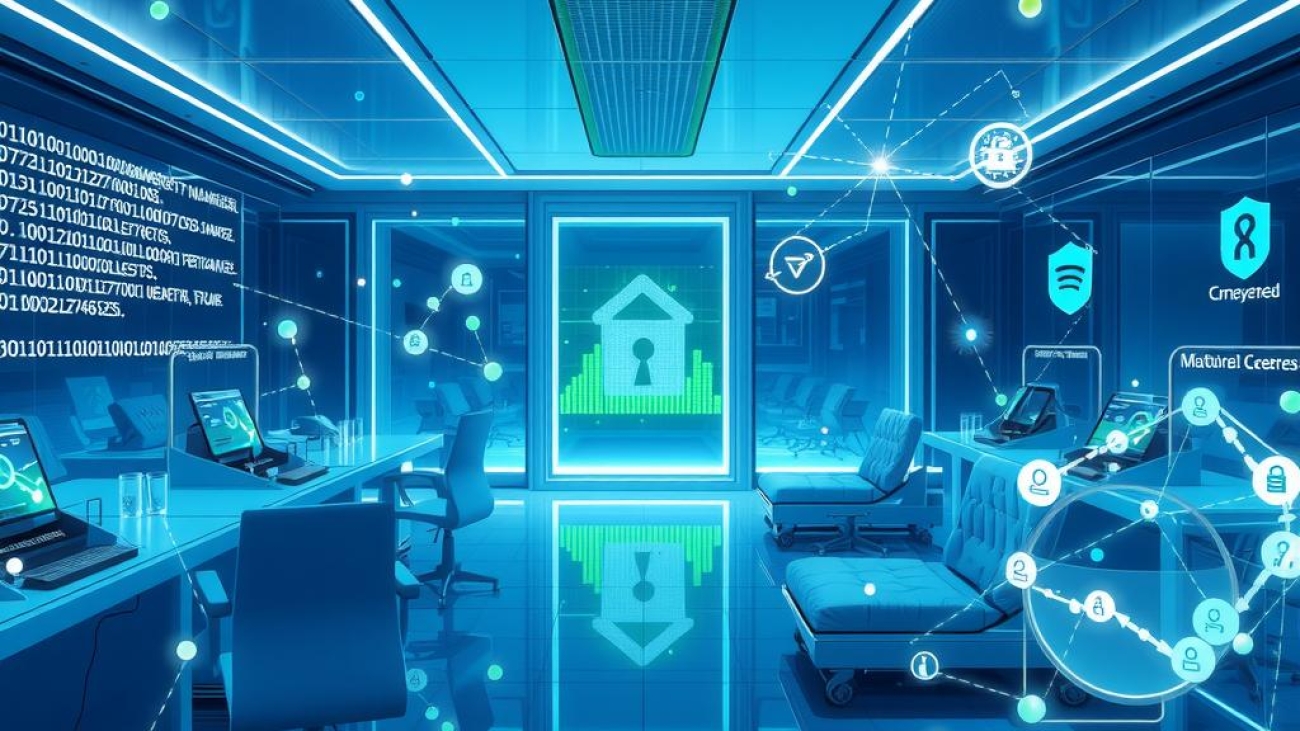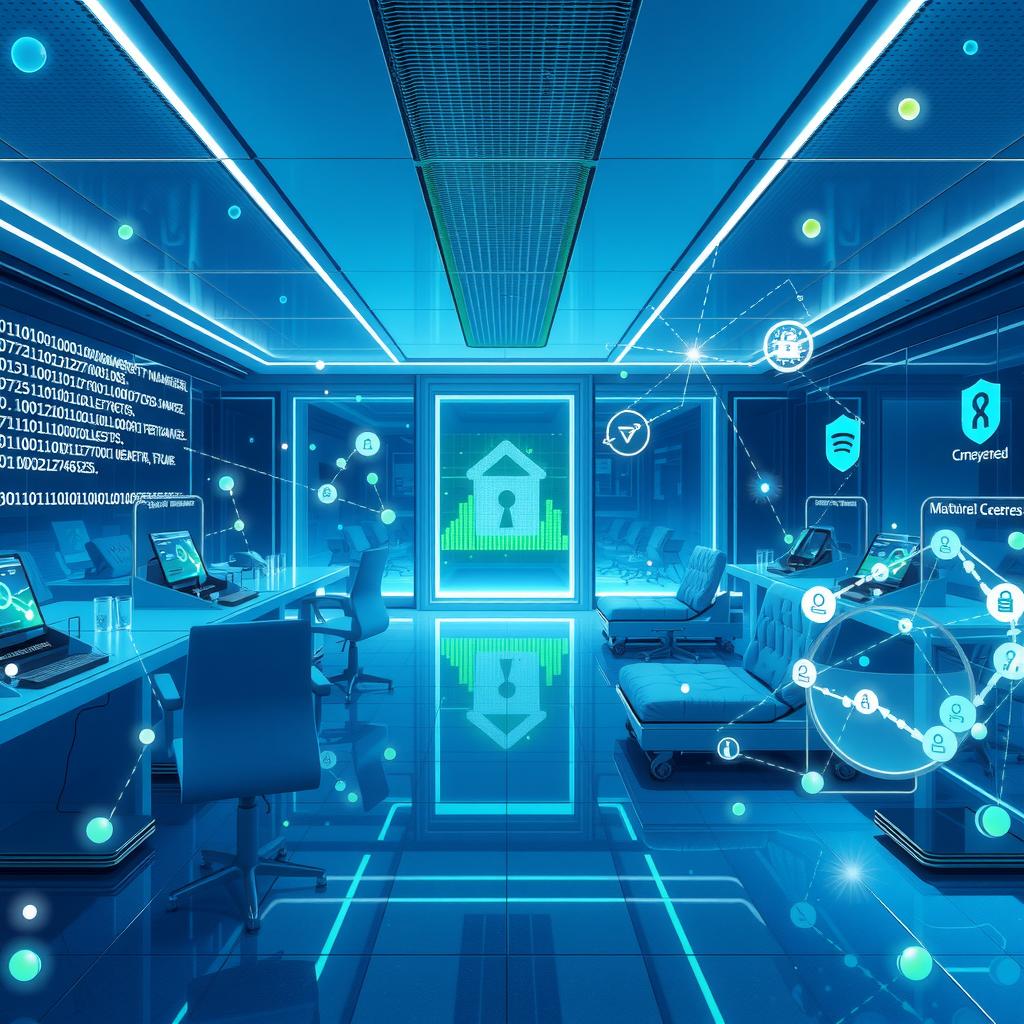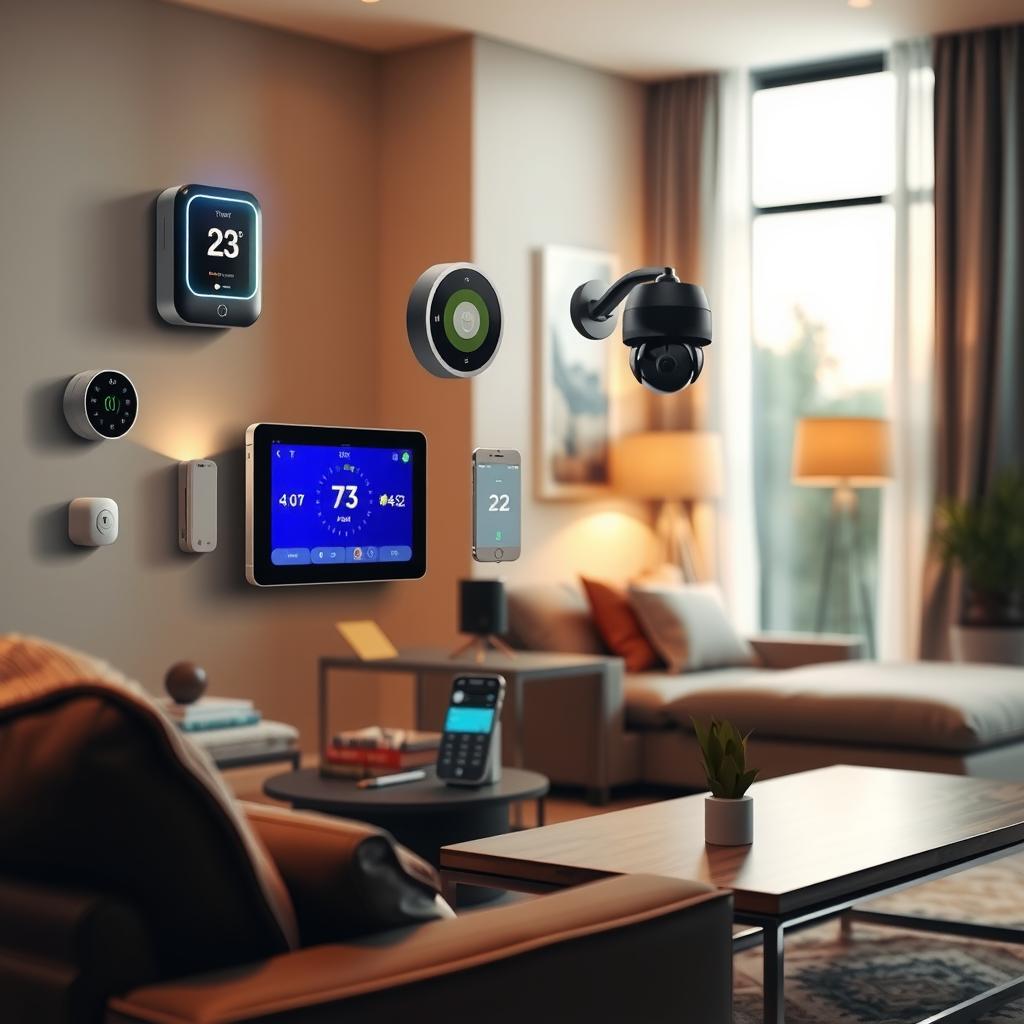In an era where smart home technology is becoming increasingly prevalent, the challenge of effectively managing vast streams of data from various devices is more pressing than ever. Home automation systems are designed to enhance convenience and efficiency, yet without a robust mechanism for handling real-time data, these systems can quickly become inefficient or even cumbersome. The ability to process information in real-time not only streamlines operations but also empowers homeowners to make informed decisions regarding energy management and device integration. This article delves into the transformative potential of real-time data processing within the realm of home automation.
As modern households adopt an array of Internet of Things (IoT) solutions—from smart thermostats and lighting to security cameras—the volume of data generated can be staggering. Traditional methods often struggle under this weight, leading to delays in response times and diminished user experiences. Herein lies the core value of implementing real-time data processing: it enables seamless communication between devices, allowing them to react instantaneously based on current conditions. Imagine a scenario where your heating system adjusts itself according to fluctuating weather patterns or when you receive alerts about unusual activity around your property—all facilitated by efficient data processing techniques.
The implications extend beyond mere convenience; they touch upon significant aspects such as safety, comfort, and sustainability within homes. By harnessing advanced technologies that support real-time analytics, homeowners can optimize their energy consumption while simultaneously enhancing their living environment’s security features. In doing so, they not only enjoy immediate benefits but also contribute positively towards broader environmental goals by reducing unnecessary energy waste.
This blog post will explore how leveraging real-time data processing transforms home automation from a series of disconnected gadgets into a cohesive ecosystem that works harmoniously together—tailoring itself continuously according to user needs and external conditions alike. Readers will discover practical insights on integrating these systems effectively while understanding the underlying technology that makes it all possible.
Through engaging with this content, readers are invited on a journey toward reimagining what their smart homes could achieve with enhanced capabilities driven by real-time data processing. With each advancement in IoT solutions comes new opportunities for efficiency—and this exploration aims at illuminating those pathways for anyone seeking greater control over their automated environments.

Key Points:
-
Seamless Device Integration: In the realm of smart home technology, achieving seamless integration among various devices is crucial. Real-time data processing plays a pivotal role in facilitating this integration by enabling instantaneous communication between connected appliances. This ensures that all devices, from lighting to climate control systems, work harmoniously together. Homeowners can enjoy a truly automated experience where their preferences are met without delay, enhancing overall comfort and convenience.
-
Dynamic Adaptation for Enhanced Comfort: One of the most compelling advantages of leveraging real-time data processing is its ability to create dynamic feedback loops within the home environment. By constantly analyzing real-time inputs—such as occupancy patterns and external weather conditions—automation systems can adjust settings accordingly. For instance, as a homeowner enters their living space, lights will illuminate automatically while thermostats optimize temperature settings based on current climatic factors. This level of responsiveness transforms daily routines into effortless experiences.
-
Sustainability through Energy Management: Beyond mere convenience, implementing real-time data solutions fosters sustainability in energy management practices. With access to detailed consumption patterns provided by IoT solutions, homeowners can make informed decisions about their energy usage habits. The insights gained through effective data processing not only help reduce waste but also contribute to lowering utility costs over time. Thus, home automation becomes not just a matter of luxury but an essential component for responsible resource management in modern living spaces.

Introduction: The Role of Real-Time Data Processing in Smart Homes
Enhancing User Experience through Immediate Insights
In today’s rapidly evolving technological landscape, real-time data processing has emerged as a cornerstone for enhancing smart home automation and user experience. This innovative approach enables immediate analysis and response to data collected from various devices within a household, thus creating an interconnected ecosystem that significantly elevates everyday living. With the integration of IoT solutions, homeowners can monitor, control, and optimize their environments seamlessly. For instance, consider a scenario where a homeowner receives instant alerts about unusual energy consumption patterns detected by smart meters; this timely information allows for proactive energy management rather than reactive measures after excessive billing occurs.
Seamless Device Integration with Automation Systems
Fostering Interconnectivity Among Devices
One of the most compelling benefits of real-time data processing is its ability to foster seamless device integration across automation systems in smart homes. Through advanced analytics and instantaneous communication between devices, users can enjoy enhanced convenience and efficiency. Imagine walking into your home after work; the thermostat adjusts itself based on real-time weather updates while lights illuminate pathways based on your movement—all enabled by sophisticated data processing techniques. These interactions not only improve comfort but also contribute to energy savings by optimizing appliance usage according to current conditions rather than relying solely on preset schedules.
Energy Management Solutions Powered by Real-Time Analytics
Maximizing Efficiency While Reducing Costs
Energy management is another critical area where real-time data processing proves invaluable in smart homes. By harnessing insights derived from continuous monitoring of electrical appliances and environmental factors—such as occupancy levels or time-of-day pricing—homeowners can make informed decisions that lead to substantial cost savings over time. For example, when integrated into an HVAC system, real-time data allows for adaptive heating or cooling based on current occupancy patterns instead of following outdated routines that may waste resources during unoccupied hours. This dynamic adjustment capability underscores how intelligent systems not only enhance user experience but also promote sustainable practices across households.
Improving Security through Timely Alerts
Strengthening Safety Measures via Instantaneous Responses
Another vital aspect where real-time data processing shines is in enhancing security within smart homes. Homeowners now have access to advanced surveillance technologies capable of analyzing video feeds live without delay—notifying them instantly if any suspicious activity occurs around their property through mobile applications or alert systems connected directly to law enforcement agencies when necessary. This immediacy transforms traditional security measures into proactive strategies aimed at prevention rather than reaction—a significant leap forward in ensuring safety at home.
Enriching User Interaction with Intelligent Systems
Creating Intuitive Experiences Tailored To Individual Needs
Lastly, the impact of real-time data processing extends beyond mere functionality—it enriches user interaction with intelligent systems tailored explicitly toward individual needs and preferences. Personalization options powered by continuous learning algorithms allow devices like virtual assistants or automated lighting systems to adapt uniquely over time based on specific tastes or habits observed throughout daily routines—and all this happens instantaneously! Such customization fosters deeper connections between technology users feel understood while navigating their environments effortlessly enhances overall satisfaction levels associated with modern living spaces driven entirely by innovation.
The Impact of Real-Time Data on Smart Home Connectivity
Enhancing Everyday Living Through Device Communication
In the realm of smart home technology, real-time data processing plays a pivotal role in creating seamless connectivity between various devices. This integration allows for instantaneous communication, enabling devices to share information and respond to user commands almost instantaneously. For instance, when a motion sensor detects movement in the hallway, it can send alerts to smart lights to illuminate the path ahead or notify homeowners through their smartphones. Such capabilities not only enhance convenience but also improve safety and energy management within homes. By optimizing how these automation systems interact with one another through real-time data, families can enjoy a more responsive living environment that aligns perfectly with their daily routines.
The Role of IoT Solutions in Smart Homes
Leveraging Interconnected Devices for Optimal Performance
The Internet of Things (IoT) is at the heart of modern smart home ecosystems, where data processing transforms ordinary appliances into intelligent entities capable of independent action based on real-time feedback. With each device connected through an integrated network, users can control everything from thermostats to security cameras from anywhere using mobile applications or voice commands. For example, temperature sensors connected to HVAC systems adjust heating and cooling settings based on household occupancy patterns detected via real-time data. This level of automation not only enhances user comfort but also contributes significantly toward energy efficiency by minimizing wasteful consumption during unoccupied hours.
Energy Management: A Key Benefit
Optimizing Consumption Through Intelligent Integration
One significant advantage derived from effective device integration is enhanced energy management facilitated by real-time data processing. Automated systems monitor usage patterns across different times and conditions—enabling households to track consumption more accurately than ever before. For instance, smart plugs can assess which appliances consume excessive power and suggest alternatives or adjustments accordingly. Moreover, utility companies are increasingly adopting IoT solutions that allow them access to aggregated usage statistics; this collaboration leads both consumers and providers towards improved strategies for sustainable resource allocation while reducing costs associated with high-demand periods.
Future Trends in Smart Home Technology
Anticipating Innovations Driven by Data Processing
Looking ahead, advancements in AI-driven algorithms promise even greater benefits as they integrate seamlessly into existing frameworks powered by real-time data. These innovations will enable predictive analytics that anticipate user needs rather than merely responding reactively—enhancing overall functionality throughout homes worldwide. Imagine waking up each morning greeted not just by soft lighting but adjusted climate controls optimized based on previous preferences tracked over time! As manufacturers invest further into developing sophisticated automation systems backed primarily by cutting-edge technologies rooted firmly within robust platforms dedicated specifically towards comprehensive device interconnectivity utilizing efficient processes informed directly via live metrics—we stand poised for remarkable transformations redefining contemporary lifestyles forevermore!
Challenges Ahead: Balancing Security & Convenience
Navigating Concerns Related To Device Interactions
Despite its many advantages however; integrating multiple devices poses unique challenges particularly concerning cybersecurity risks inherent within expansive networks reliant heavily upon shared connections sustained primarily through continuous streams involving sensitive personal information exchanged regularly among countless components participating actively throughout interconnected environments governed strictly adhering guidelines emphasizing protection protocols ensuring privacy remains intact amidst growing concerns surrounding potential vulnerabilities surfacing frequently due widespread adoption trends influencing market dynamics today impacting consumer trust levels drastically changing perceptions regarding viability overall affecting future developments prospective offerings likely needing careful consideration moving forward implementing best practices safeguarding integrity continually evolving landscape keeping pace technological progress achieved thus far without compromising essential values underpinning fundamental principles guiding decisions made industry-wide encouraging responsible innovation fostering healthy relationships built mutual respect established jointly together contributing society holistically benefiting everyone involved ultimately leading happier healthier lives enriched experiences derived simply enjoying conveniences brought forth transformative potentials unveiled previously unimaginable possibilities revealed thorough exploration realms untapped yet waiting discovery!
Sustainability and Efficiency in Energy Management
Harnessing Real-Time Data for a Greener Future
In the quest for sustainability, leveraging real-time data processing has emerged as a transformative strategy in energy management. By utilizing IoT solutions and advanced home automation technologies, organizations can gain immediate insights into their energy consumption patterns. This immediacy allows for swift adjustments to be made within existing systems, optimizing usage while reducing waste. For instance, smart home technology enables users to monitor energy consumption across various devices through centralized dashboards that display real-time metrics. Such visibility is crucial; it empowers decision-makers not only to identify inefficiencies but also to implement targeted strategies aimed at minimizing resource use.
The integration of automation systems enhances this capability further by allowing automated responses based on real-time data inputs. For example, if sensors detect excess power usage during peak hours, connected appliances can automatically shift their operation times or reduce power draw accordingly. This intelligent device integration fosters an environment where sustainable practices are seamlessly woven into daily operations without requiring constant human oversight. As companies increasingly adopt these innovative approaches, they contribute significantly towards achieving broader environmental goals.
Moreover, the role of real-time data extends beyond mere monitoring; it facilitates predictive analytics that informs future actions and investments in sustainability initiatives. By analyzing historical trends alongside current performance metrics derived from effective data processing, organizations can develop robust strategies tailored specifically to enhance efficiency over time while adhering to regulatory standards concerning energy consumption reduction.
In summary, employing real-time data processing within energy management frameworks offers invaluable insights that drive both efficiency and sustainability efforts forward. Organizations adopting such methodologies not only position themselves as leaders in corporate responsibility but also stand poised to benefit economically through reduced operational costs associated with lower energy consumption levels—all achieved via smart integrations enabled by cutting-edge technologies.
Unlocking the Power of Real-Time Data Processing for Smart Home Automation
In today’s rapidly evolving landscape of smart home technology, the integration and responsiveness of devices present both a challenge and an opportunity. Homeowners are increasingly seeking solutions that simplify their lives through effective home automation. This is where real-time data processing comes into play, transforming how various appliances communicate and respond to user needs. By facilitating immediate feedback loops among connected devices, this technology ensures that homes can adapt dynamically to preferences and environmental changes.
The core advantage of leveraging real-time data processing within smart homes lies in its ability to enhance user experiences significantly. For instance, when homeowners arrive home after a long day, systems powered by real-time data can automatically adjust lighting to create a welcoming atmosphere while regulating heating based on external temperatures. This seamless integration not only boosts comfort but also maximizes energy efficiency—an essential aspect of modern living spaces driven by advanced IoT solutions.
Moreover, embracing real-time data processing offers profound implications for sustainability and energy management. With comprehensive insights into consumption patterns afforded by this innovative approach, users can make informed decisions regarding their usage habits. As they become more aware of how their automated systems operate in real time, homeowners gain the ability to reduce waste effectively while lowering utility costs—a win-win scenario that aligns with contemporary environmental concerns.
As we explore the realm of real-time data processing, it becomes evident that this cutting-edge solution is fundamental in reshaping residences into intelligent ecosystems. The interplay between device integration and automation systems fosters unprecedented control over one’s living environment while simplifying daily routines significantly. Ultimately, as individuals harness these advancements in smart home technology, they stand at the forefront of a revolution poised to redefine comfort and convenience at home.
FAQ:
Q: How does real-time data processing improve smart home automation?
A: Real-time data processing enhances smart home automation by enabling instantaneous communication between devices, allowing them to adapt quickly to user preferences and environmental changes for improved efficiency.
Q: What role do IoT solutions play in real-time data processing?
A: IoT solutions facilitate the connectivity needed for real-time data processing across multiple devices within a smart home ecosystem, ensuring seamless interactions that contribute to better energy management and overall functionality.
Q: Can using real-time data help reduce energy consumption?
A: Yes! By providing detailed visibility into energy usage patterns through effective analysis via real-time processes, homeowners can identify opportunities for reducing waste while optimizing their overall consumption habits.


















